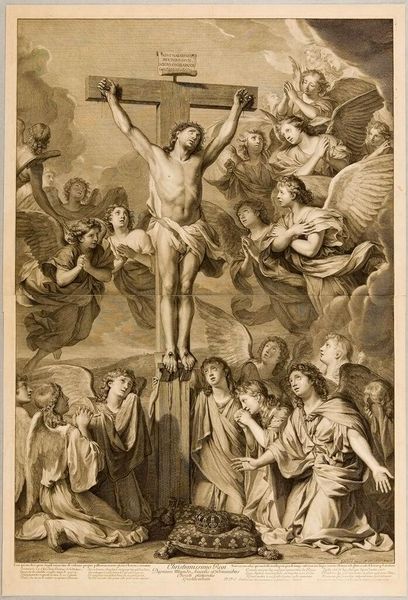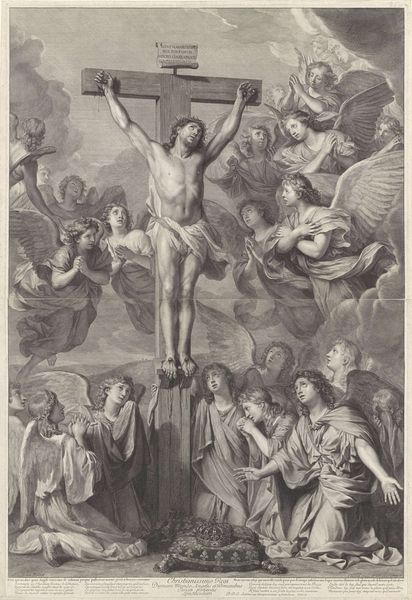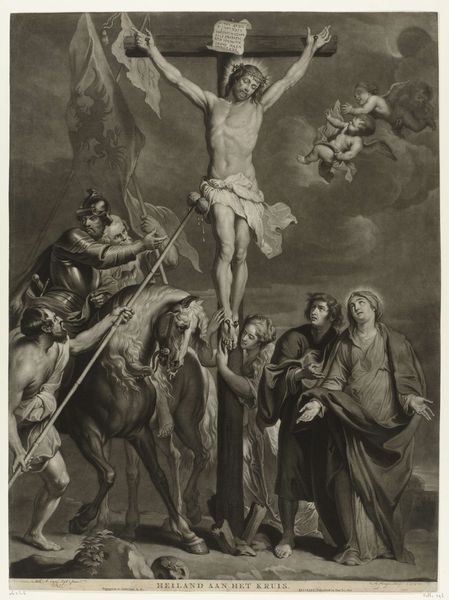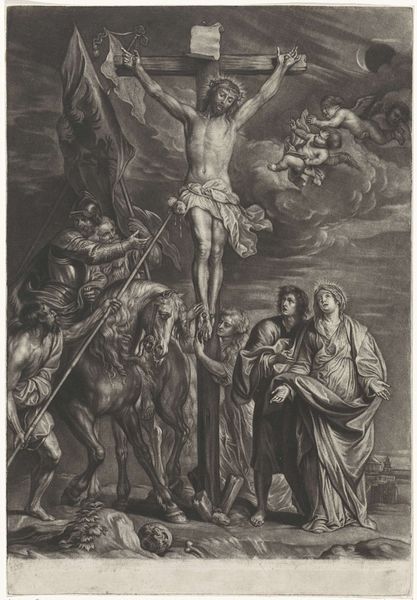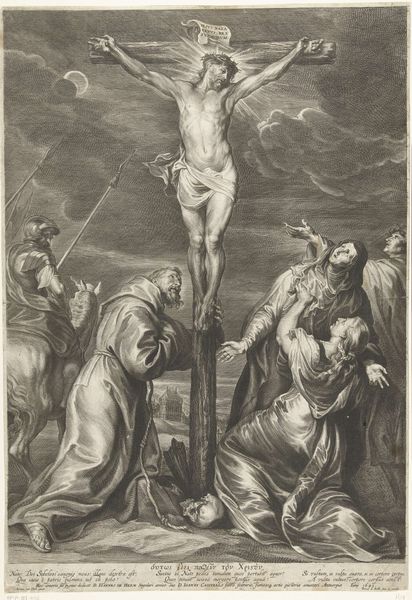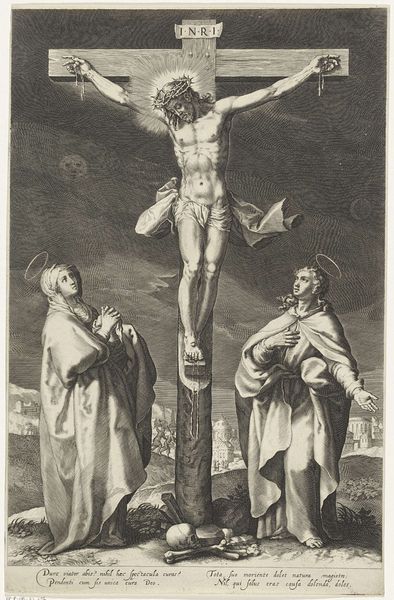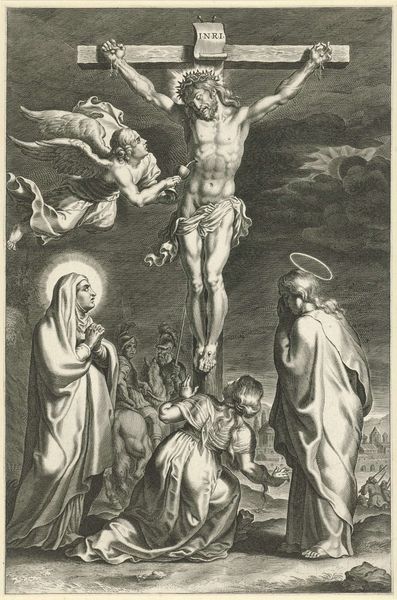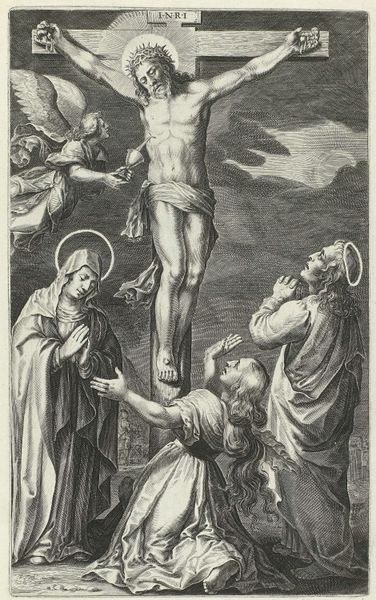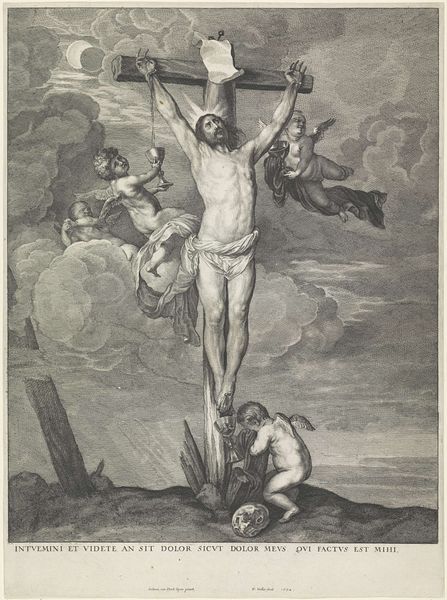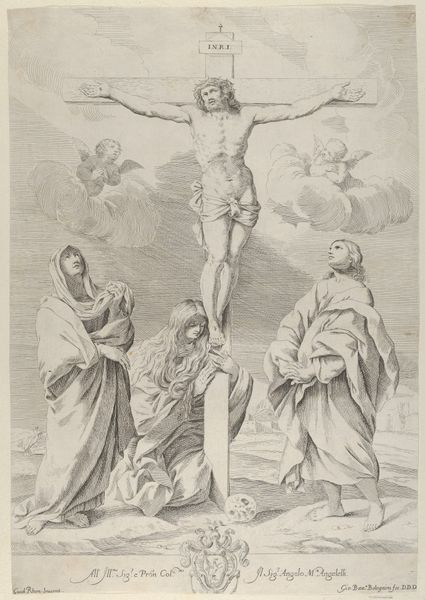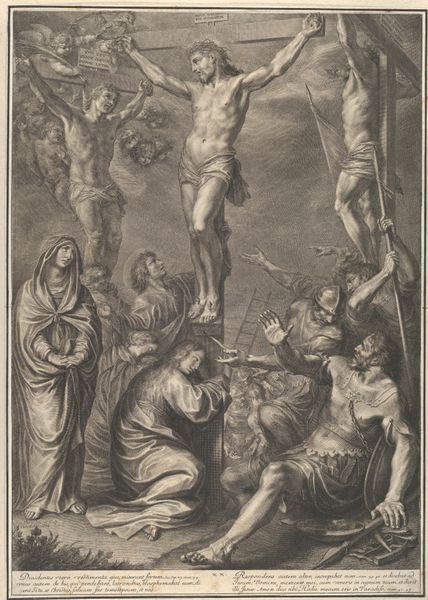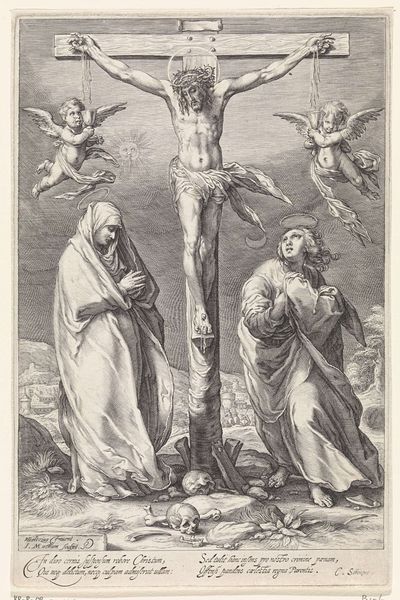
print, engraving
#
narrative-art
#
baroque
# print
#
caricature
#
figuration
#
pencil drawing
#
history-painting
#
nude
#
engraving
Dimensions: height 660 mm, width 483 mm
Copyright: Rijks Museum: Open Domain
Curator: Here we have "Christ on the Cross with Mary and Saints," an engraving dating somewhere between 1630 and 1677, credited to Adriaen Lommelin. It’s currently part of the Rijksmuseum's collection. Editor: It's undeniably striking; the stark contrast emphasizes the anguish, but also, the somewhat theatrical poses of the figures around the cross give me pause. It almost feels staged, doesn’t it? Curator: The Baroque period definitely embraced drama. Notice how the central image of Christ is rendered; a very specific artistic choice influenced by traditional iconography. Consider the specific saints depicted and what they represent symbolically—their presence signifies something far deeper than mere observation. Editor: The sheer detail is impressive, if painstaking. One can only imagine the physical labor that goes into an engraving like this, scratching away at a copper plate… It gives a human element to the image. Are there any specific signs related to Lommelin’s methods or use of material? Curator: Knowing the conventions and symbolism during the Counter-Reformation helps us to see how intended this artwork to function. The gestures, the positioning of the saints – the details build meaning, reinforcing the message of sacrifice and redemption central to Catholicism. Think of the scales held by that figure on the lower left: Judgment is implied in every carefully rendered line. Editor: Speaking of those lines, what are they doing structurally? I notice some parts seem to pop a bit more with the light, so what materials are doing that, and does it help the main figures feel closer to us? Curator: The composition leads the eye upward, naturally, toward the figure of Christ, the vanishing point toward a higher truth; it serves both devotional and didactic purposes. Look at how Lommelin plays with light and shadow, Baroque aesthetics again… to provoke emotional reaction to the religious scene. Editor: But at what cost does religious spectacle take center? How does that affect viewership then and now? Was it used more to persuade people in church and the court, or as a means of accessible connection? I guess I’m skeptical of all this grandeur. Curator: An interesting thought to keep turning over in our heads, surely, as we appreciate the engraving work as an artistic rendering as we depart today. Editor: Yes, seeing the context, the artistry and human presence in such a well-made product does give the image added complexity beyond religious symbolism.
Comments
No comments
Be the first to comment and join the conversation on the ultimate creative platform.
